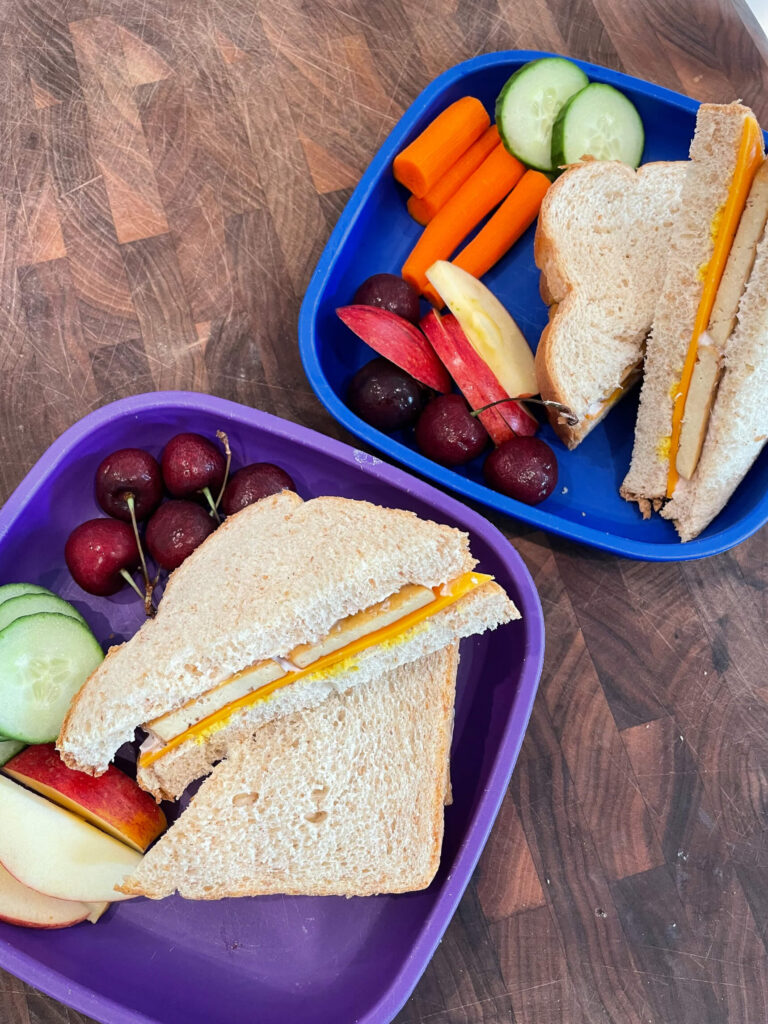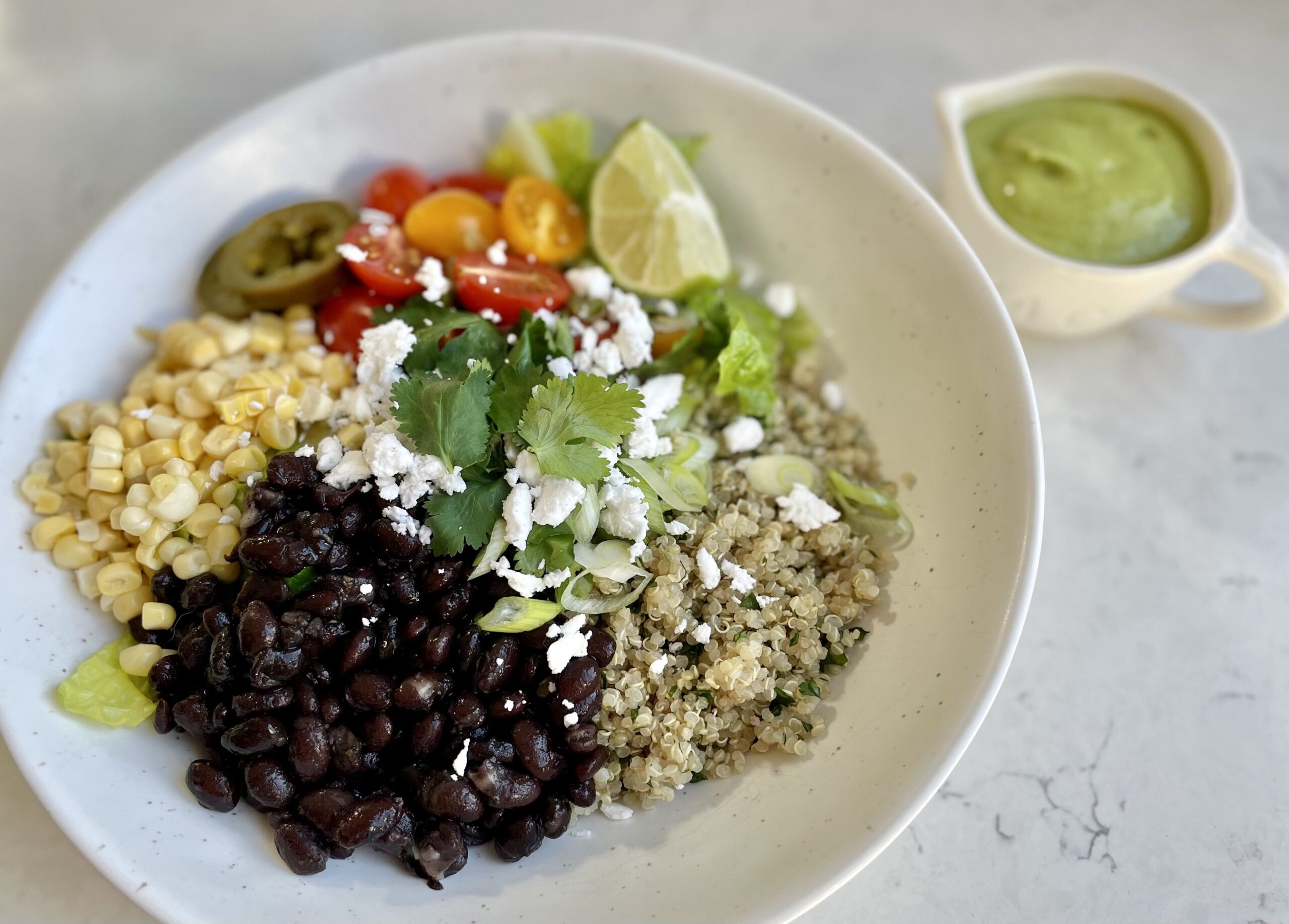Mandy Alzner
Pin it:
The fact that our family is plant-based is often met with shock by other parents, especially when it comes to the kids and what they eat. I get asked a lot of questions like…what do I feed my kids, how do I know they are getting enough protein, and do I give them a multi-vitamin.
These are all really great questions, so I figured I’d answer the most commonly asked ones here, just in case any of you were considering incorporating some plant-based meals into your child’s diet.
I should preface this all by saying, I am in no way an expert on pediatric nutrition and these are just things that have worked for our family. My kids, like many of yours, are picky eaters and like to exert their control when it comes to meal time!
Oftentimes I need to serve them the same food multiple times before they really give it a fair try, so keep that in mind when your trying something new with your kids.

1. First question I always get is HOW?! How did we get the kids to go plant-based?
So, my answer to this question has 2 parts.
First, in our home we have a “rule”, which is really more of a guideline, that we don’t purchase or eat animal products in our house. (I say this is more of a guideline, because we sometimes have things like goldfish crackers or pirate’s booty, but for the most part I only purchase food that aligns with our plant-based diet.)
This “rule” actually made the transition at home pretty easy because once all the food in our house was plant-based, those were the only options. That being said, when they are out of the house, we don’t tell them what they can and cannot eat.
Our oldest, Stella, likes meat and dairy products and will often eat them when she’s with someone else for dinner. Our middle, Anson, discovered that dairy makes his tummy hurt, so even when he’s given the opportunity to eat something with dairy in it, he’ll often opt out…but sometimes he doesn’t, and that’s okay too. Both boys have never really eaten meat and don’t seem to have a desire to, so that helps as well.
Second part of this answer comes down to what I cook for them. When we were first starting this journey our kids were very young. Stella was 3, Anson was barely 1, and Bennet wasn’t with us yet. Transitioning them to plant-based consisted of me simply cooking the food they recognized, but without the animal products. My advice is to stick to the foods your kids already enjoy, and start by making small swaps. For example, Stella loved quesadillas, so I started adding in some vegan cheese with the regular cheese and black beans to introduce the taste and texture to her before we worked our way all the way up to a fully plant-based quesadilla.
If your children are older, I’d start with a conversation about where our food comes from and the impact it has on our health and the health of our planet. Perhaps an open and honest conversation with your kids about the origin of their food may have them wanting to try the alternatives! In the beginning, I would also suggest trying the “processed” versions of the foods you typically eat before jumping straight into tofu as your meat substitute. If your family enjoys chicken parmesan, try using some of the breaded alternative chicken products that are becoming more readily available in grocery store freezer sections – you never know, you may be pleasantly surprised!

Another common question, How do you get them to eat fruits and vegetables?
Similar to the first answer…it’s what we have in the house, so it’s what I offer them! I am always shocked to see how fast they’ll eat a cutting board full of fruits and veggies when it’s sitting at the table for “drive by” snacking throughout the afternoon. I have found that changing up the way I serve the kids’ snacks, like putting them in separate sections of a muffin pan, makes the experience more fun and encourages them to try new things.
We also drink a lot of smoothies! Which is a great opportunity to incorporate some flax, chia, or hemp seeds to boost their omega 3 and fiber intake. At the end of the day, I try not to get too hung up on whether my kids are eating enough vegetables and instead focus on whether they are eating enough colors.
Kids tend to enjoy fruit more than vegetables because they are naturally sweeter, but they offer just as much wonderful vitamins, minerals and fiber as vegetables (especially with the skins still intact). If your kid won’t eat green vegetables, try offering green fruits like kiwis, honeydew melon, and green apples instead. The colors of the foods are indicators of which phytonutrients they are rich in, so as long as you’re offering a rainbow of colors to your child you can worry less about whether it is a fruit or a vegetable.

How do you know your kids are getting enough protein when eating a plant-based diet?
Our society’s language around food has protein being synonymous with meat, when in reality protein is a macro-nutrient that is made up of amino acids. There are 9 essential amino acids that our bodies cannot produce on their own, and therefore they need to come from our food. These essential amino acids can be found in both animal and plant based protein sources! Contrary to what many may think, meat is not the only source of “complete” protein, meaning it contains all 9 essential amino acids.
Quinoa, buckwheat, soy, hemp, and chia are all examples of complete proteins from plants.
Not all of them are created equal however, so I try to make sure I feed the kids a variety of protein sources throughout the week to ensure they are getting everything they need. Surprisingly, the recommended dietary allowance of protein for children aged 4-8 is only about 19 grams per day (plus or minus some depending on their activity level), so it’s really not that difficult to do.
Here are a couple examples of plant-based protein sources *per 100g
- Quinoa – 14g
- Chickpeas – 19g
- Tofu – 8g
- Rolled Oats – 13g
- Hemp – 31g
- Pumpkin Seeds – 30g
- Lentils – 26g
- Green Peas – 5g
- Black Beans – 22g
- Cashews – 18g
- Avocado – 2g
Do you give your kids a multivitamin or any supplements?
We’ve given the kids multi-vitamins in the past, but it’s not something we do regularly. The only thing we give them daily is a vitamin D supplement, which is a very common deficiency among humans in general, especially in the cooler months.
Some plant-based parents choose to supplement iron and B12 as well, but that’s not something we feel is necessary because our kids eat plenty of tofu, quinoa and beans, which are all great sources of iron, and I cook regularly with nutritional yeast, which contains a good amount of vitamin B12. It’s important to monitor your kid’s level regularly if possible, whether you’re plant-based or not, to ensure they are getting all the vitamins and minerals they need to grow and thrive.

What if your kids don’t want to be plant-based?
That’s completely fine! As I mentioned before, when they are out of the house and offered something that isn’t plant-based, they are welcome to make their own choices. We would never tell them what they can and cannot eat! However, I do feel it’s fair to set boundaries around our home and what we spend our money on. Karl and I have made the choice to not support animal agriculture, but when they are grown and have homes of their own they’ll be able to decide that for themselves.
I’m picturing my kids coming home for Sunday dinners and being completely fine with eating a plant-based meal, because that’s what they grew up eating…I would also hope their looking forward to their mom’s cooking!
Karl and I recognize that all we can do is try to model the behaviors we want to see grow in our children, like prioritizing exercise and mental health, and eating a diet that feeds the body while also nourishing the soul. As they grow and form their own opinions they will hopefully take those lessons with them, but at the end of the day if plant-based eating isn’t something they want to maintain, that’s certainly their choice!
Try to remember that your child’s diet doesn’t need to be perfect to be nourishing. It can be incredibly difficult to feed picky little eaters, so don’t put too much pressure on yourself to make every meal balanced. I try to think about their diets on a broader scale rather than focusing on each individual meal.
Making sure you offer a variety of colors, protein sources and whole grains throughout the week is the best thing you can do to encourage your child to eat a well rounded diet…now whether they actually eat what you give them is a whole different story!
Hopefully the answers to these 5 commonly asked questions help you on your journey to incorporating some more plant rich foods into your families’ diets!
BY:
Share it:



Love Notes